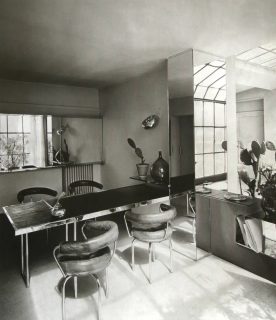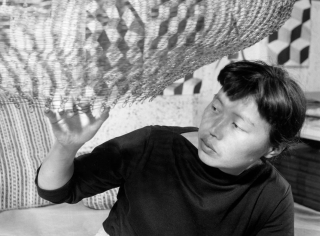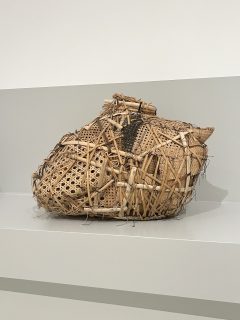5 Chairs from ‘500 Designs That Matter’
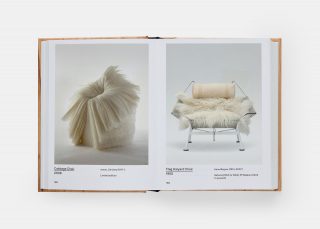
A new publication from Phaidon offers an in-depth visual study of the ubiquity and diversity of chairs. The book serves as a rigorous encyclopaedia of important designs and an exploration of how we live with, and through, objects.
Patter selects five chairs from the 500 that demanded a closer look.
1. Flag Halyard Chair, 1950
The unlikely combination of rope, painted and chrome-plated steel, sheepskin and linen in Hans Wegner’s Flag Halyard Chair are unprecedented in furniture manufacture. Wegner’s motivation in using such contrasting materials was not to exploit their textural interplay but more simply to demonstrate his ability to design innovative, practical and comfortable furniture in any material. There is an apocryphal story that Wegner conceived this design while on the beach: he supposedly modelled the grid-like seat in a sand dune, presumably with some old rope that lay close to hand. (A ‘halyard’ is a line that hoists or covers a sail.) Initially it was made by Getama in limited numbers, but was never a runaway commercial success. More recently, it has been put back into production by PP Møbler.
2. Due Più Chair, 1971 Nanda Vigo (1936–) Conconi (1971)
Working out of her own Milanese atelier from the 1950s, Nanda Vigo resolutely pursued a unique, science-fiction-inspired vision, as portrayed in the Due Più (‘two more’) Chair, her most recognizable furniture design. Devised especially for More Coffee, Milan, the frame is made from chromed tubular steel, generously upholstered in faux-fur wool, both materials part of Vigo’s signature repertoire. The juxtaposition combines a reference to the industrial functionality of the Bauhaus with a love of 1960s Pop Art. In 2015, the chair featured in a retrospective of Vigo’s work from the 1960s and 1970s, at SpazioFMG for Architecture, in her home city.
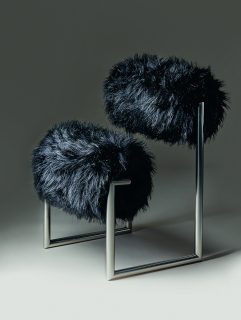
3. Armchair 42, 1935 Alvar Aalto (1898–1976) Artek (1935 to present)
Although familiar with Marcel Breuer’s experiments with tubular steel and the industrial aesthetics of Bauhaus, Alvar Aalto decided to adapt these pioneering ideas to wood, a warmer and more tactile material with a long tradition in Scandinavia. Building on technologies developed by Michael Thonet in the nineteenth century, Aalto combined craft aesthetics and machine production to develop new techniques of bonding and moulding plywood. Designed in 1932, his birch Armchair 42 showcases several of these innovative design solutions. The Armchair’s cantilevered wooden legs connect to a single sheet of plywood finished in a high-shine lacquer, which serves as both the chair’s seat and back. A chair with no straight lines, Armchair 42 tested the limits of manufacturing bent plywood.
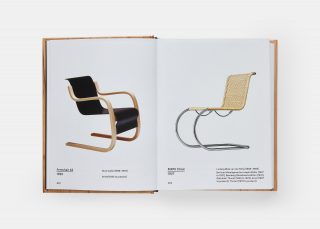
4. Ruché Armchair, 2013 Inga Sempé (1968–) Ligne Roset (2013 to present)
With this whimsical, asymmetrical armchair, Inga Sempé combines the tall uprights of its simple frame with an undulating duvet in a union of rigorous straight lines and welcoming curves, its compact form suitable for apartment living. With no hard edges under the padded cover draped over the top, its single arm, positioned either left or right, expands the positions that users can adopt. ‘Ruché’ refers to the sewing technique whereby fabric is gathered or pleated, reflected here in the quilted upholstery. The armchair’s solid-beech structure and feet are reinforced by two steel frames on the seat and back: comfort is provided by way of polyurethane foam cushions over Pullmaflex suspension on the seat and a sprung-steel grill for the back, covered with polyester quilting.
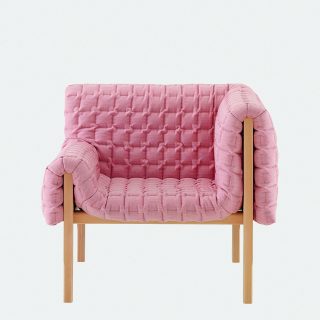
5. Sketch Chair, 2005 Front Design Sofia Lagerkvist (1972–) Anna Lindgren (1974–)
To create the Sketch Chair, an all-female group of Swedish designers, Front Design, combined two cutting-edge technologies: 3D printing and motion-capture film. The Stockholm-based practice used motion-capture film to record a three-dimensional design, which was sketched with a specially made ‘pen’ device to make strokes in mid-air. The designers then transferred this file to a 3D printer normally used for racing-car parts. (They used Finnish manufacturer Alphaform for the printing.) This extruded the chair, layer by layer, with little waste, from a liquid resin strengthened with tiny ceramic particles. From a limited edition of only three, its use as a chair is perhaps secondary to its conceptual nature, which pushes at the frontiers of art, design and technology.
Extracts from Chair: 500 Designs That Matter, published by Phaidon, £17.95 (Phaidon.com) Patter readers receive 20% off Phaidon with the code PHAIDON20 until 31st October, 2025.
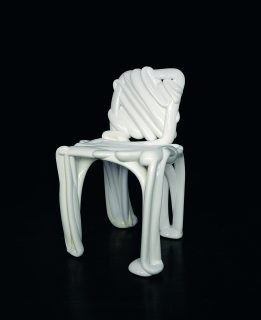
Related Content
A Moment With Charlotte Perriand
Jun-2021If Le Corbusier is a giant of modernism, Charlotte Perriand—the woman he collaborated with, and who co-designed some of the furniture that featured in his ‘machine for living in’—is less well-known, and often uncredited. Plus ça change.
Things to Go See — Exhibitions for Summer
Jun-2025Abstract painting, sculptural miniatures, woven works and garden design. 8 shows to stop by in the warm months ahead.
Things to Go See — Woven Histories at LACMA
Nov-2023An exciting exhibition which looks at the role textiles have played in modern abstraction over the past 100 years.
